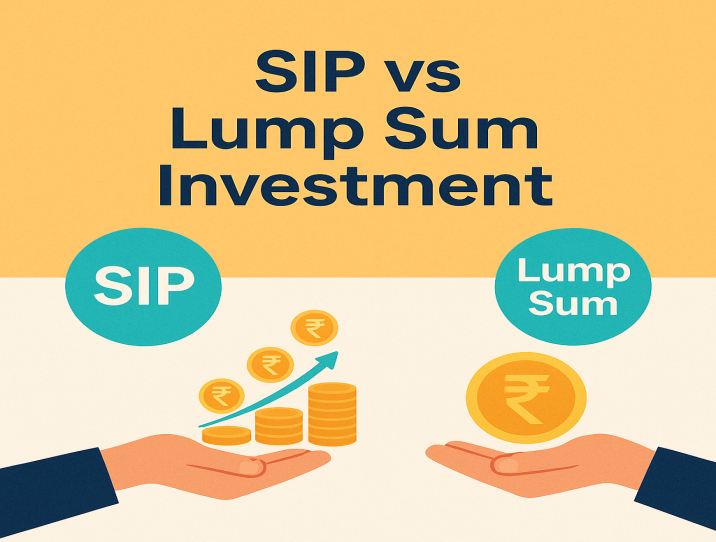SIP vs Lump Sum Investment: Which Strategy is Better for You? Difference Between SIP and Lumpsum, Full details 2025 Updated.
SIP vs Lump Sum Investment
Investing your money wisely is key to building wealth over time. When it comes to investing in mutual funds, two popular approaches are SIP (Systematic Investment Plan) and lump sum investment, each with its own style and strategy. While both can grow your money, they suit different types of investors and situations. Let’s explore how they differ, and which one might be right for you.
Table of Contents
What is SIP (Systematic Investment Plan)?
SIP lets you invest a fixed amount at regular intervals, like every month or quarter, into a mutual fund, helping you build wealth gradually. It’s like setting a monthly EMI for your investment.
Example: If you invest ₹2,000 every month in a mutual fund, that’s SIP.
Key Benefits of SIP
- Disciplined investing: Encourages a regular habit of saving and investing over time.
- Rupee cost averaging: You buy more units when the market is low and fewer when it’s high, this averages out the cost over time.
- No need to time the market: You don’t have to worry about market highs and lows.
- Good for salaried individuals: Ideal for people with a steady monthly income.
What is Lump Sum Investment?
Lump sum investing is when you invest a large amount of money at once into a mutual fund.
Example: Investing ₹1 lakh at one go in a mutual fund is a lump sum investment.
Key Benefits of Lump Sum:
- Potential for higher returns in a rising market: If the market performs well after your investment, your entire amount benefits.
- Simple and one-time process: No need to remember monthly payments.
- Ideal for bonus, inheritance, or large savings: Good if you receive a large sum and want to invest it efficiently.
SIP vs Lump Sum: Key Differences
| Feature | SIP | Lump Sum |
|---|---|---|
| Investment Style | Regular (monthly/quarterly) | One-time |
| Market Timing | Less relevant | Crucial |
| Risk Level | Lower due to cost averaging | Higher if market drops after investment |
| Suitable For | Regular income earners | Investors with large surplus cash |
| Flexibility | High (can start/stop/modify) | Less flexible |
| Best in | Volatile or falling markets | Bull (rising) markets |
Which One is Right for You?
Choose SIP if:
- You are new to investing.
- You earn monthly (like salaried individuals).
- You want to avoid timing the market.
- You prefer to invest small amounts regularly.
Choose Lump Sum if:
- You have a large amount to invest.
- You are experienced and understand market trends.
- The market is stable or expected to rise.
- You’re investing for long-term goals.
Expert Tip
Even if you have a lump sum amount, you can invest it through SIP using a technique called STP (Systematic Transfer Plan). It allows you to move your money slowly from a debt fund to an equity fund, helping lower the risk of market ups and downs.
Final Thoughts
Both SIP and Lump Sum investment methods can help you grow your wealth, but the right choice depends on your financial situation, goals, and risk appetite. If you’re looking for consistency and reduced risk, SIP may be better. If you have a large sum and want to take advantage of a rising market, lump sum could be more rewarding.
Always remember – Success in investing isn’t about picking the perfect time, but about staying invested for the long run.

